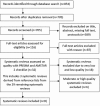Medication adherence interventions and outcomes: an overview of systematic reviews
- PMID: 31338165
- PMCID: PMC6613929
- DOI: 10.1136/ejhpharm-2018-001725
Medication adherence interventions and outcomes: an overview of systematic reviews
Abstract
Objective: To present evidence for healthcare-provided medication adherence interventions on clinical, economic and humanistic outcomes among patients.
Methods: Literature search of systematic reviews in Medline, Embase and CINAHL (2007-2017), validation of quality using A Measurement Tool to Assess Systematic Reviews (AMSTAR) 2 and Preferred Reporting Items for Systematic Reviews and Meta-Analyses questionnaires and, finally, extraction, combination and tabulation of results for included studies.
Results: From eight systematic reviews with medium to high AMSTAR 2 score, 37 randomised controlled studies involving 28 600 participants were extracted. Patient education and counselling showed some positive effects on medication adherence. Patient education also showed some positive effects on morbidity, healthcare utilities and patient satisfaction. Counselling had some benefit on mortality and healthcare utilisation. Simplifying doses was shown to have some benefit on morbidity and patient satisfaction. Interventions delivered by pharmacists and nurses showed a better result in improving adherence and outcomes than interventions delivered by general practitioners.
Conclusions: Some interventions were found to have positive effect on adherence and outcomes, but no single strategy showed improvement in all settings. For future research patients should be screened for non-adherence to reveal both if they are non-adherent and type of non-adherence, as well as bigger sample sizes and longer duration of follow-up.
Keywords: adherence; intervention; medication; outcomes; review.
Conflict of interest statement
Competing interests: None declared.
Figures
References
-
- Wiffen P, Eriksson T, Lu H. CHAPTER 2 introduction to evidence-based practice in evidence-based pharmacy 2nd edition. Eur J Hosp Pharm 2013;20:324–7. 10.1136/ejhpharm-2013-000415 - DOI
-
- Eriksson T, Lu H, Wiffen P. Chapter 6: How to best practice evidence-based pharmacy with your available resources? Eur J Hosp Pharm 2014;21:194–201. 10.1136/ejhpharm-2014-000497 - DOI
-
- Wiffen P, Eriksson T, Lu H. CHAPTER 3: Asking and formulating the right questions and finding useful resources in evidence-based pharmacy—2nd edition. Eur J Hosp Pharm Sci 2014;21:2–6. 10.1136/ejhpharm-2013-000428 - DOI
Publication types
LinkOut - more resources
Full Text Sources

